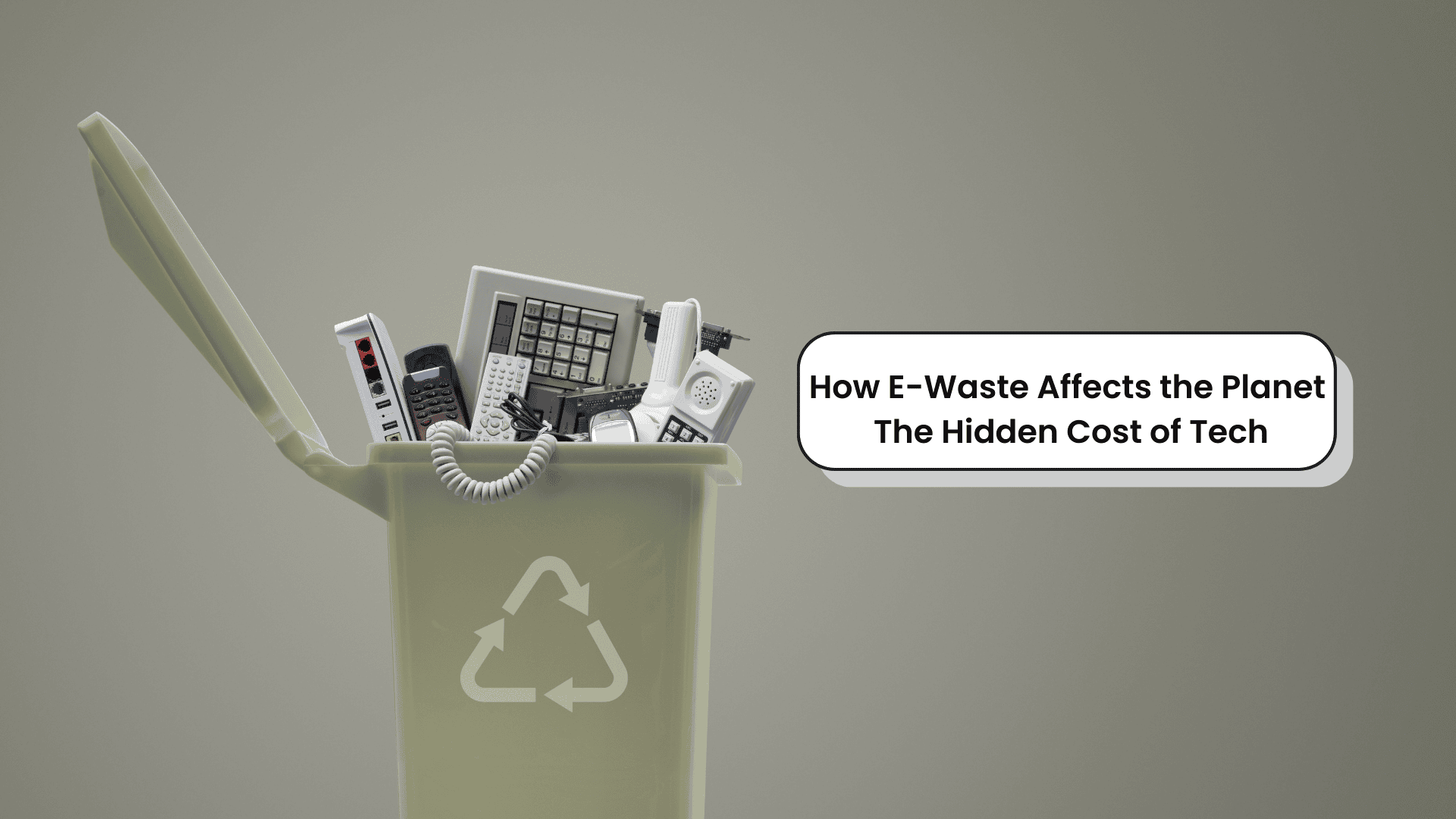As technology evolves faster than ever, so does the pile of discarded gadgets we leave behind. E-waste, or electronic waste, is one of the fastest-growing environmental threats in the world today. From old smartphones and laptops to broken TVs and unused chargers, the consequences of improper disposal run deep.
Here’s a look at how e-waste impacts our planet—and why responsible tech use matters.
🧨 What Is E-Waste?
E-waste refers to discarded electronic devices or components that are no longer useful, including:
- Computers and peripherals
- Mobile phones and tablets
- TVs and monitors
- Batteries and chargers
- Home appliances like microwaves and air conditioners
☠️ Toxic Materials in Electronics
Most electronics contain hazardous substances, including:
- Lead: Damages the brain and nervous system
- Mercury: Affects kidneys and the environment
- Cadmium: Causes lung damage and cancer risks
- Brominated flame retardants: Harm hormone function
When these materials are not disposed of properly, they can leach into soil and water, contaminating ecosystems and harming both humans and wildlife.
🌍 Environmental Impact of E-Waste
- Soil Contamination
- Toxic metals and chemicals seep into the ground, affecting plant growth and food safety.
- Water Pollution
- Improperly dumped e-waste can pollute groundwater and nearby rivers, impacting entire communities.
- Air Pollution
- In many developing countries, e-waste is burned to retrieve valuable metals, releasing toxic fumes.
- Resource Depletion
- Electronic devices contain rare earth metals like gold, lithium, and cobalt. When e-waste isn’t recycled, these non-renewable resources are lost forever.
🧑🤝🧑 Human Health Risks
Communities near informal e-waste recycling sites often face:
- Respiratory problems
- Neurological damage
- Increased cancer risk
- Congenital disabilities and developmental issues
Children are particularly vulnerable to exposure due to developing organs and higher absorption rates.
🔁 What Can Be Done?
- Recycle Responsibly
- Use certified e-waste recycling centers and programs to ensure safe disposal.
- Donate or Repair
- Extend the life of electronics by repairing or donating them instead of discarding them.
- Buy Smart
- Choose durable, repairable devices and avoid upgrading unnecessarily.
- Support the Right to Repair
- Advocate for laws that make it easier to fix and maintain devices.
Final Thoughts
The dark side of our digital lives is often hidden in landfills and burning dumpsites across the globe. E-waste may seem like yesterday’s tech, but its consequences can last generations. By taking action now, we can reduce its impact and build a more sustainable future for the planet and ourselves.

